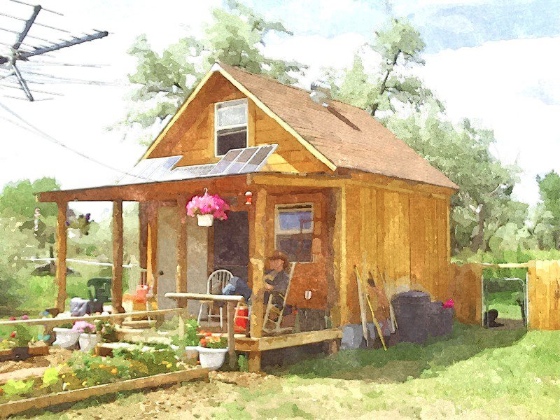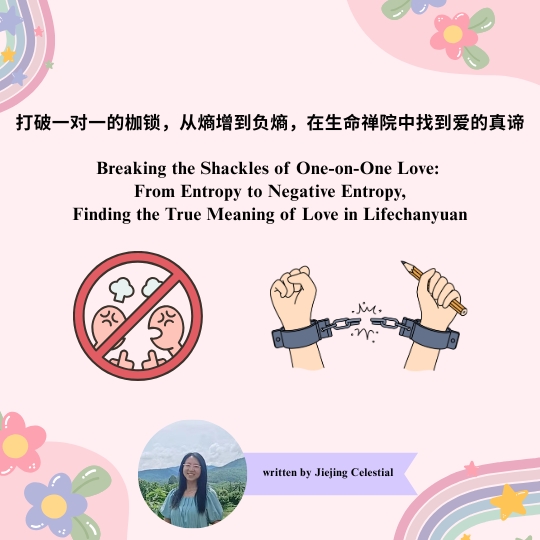|
|

|
10 Ways to Live More Sustainably
What do Natural, DIY bloggers talk about in the car? Usually stuff like this:
“How many simple sustainable living tips can you list? GO!”
It took only a few minutes to come up with this list of 10 ideas; some we’ve covered before, but they’re always worth mentioning again.
If you’re scratching your head about what living a sustainable lifestyle means and why it’s important, consider these manifest advantages.
We were also inspired and humbled by our recent Plutus Award for the Best Sustainability Personal Finance Blog. Thanks everyone, let’s change the world!
Benefits of Sustainable Living

Using less resources – The ability to be sustained in certain areas of life means that you’re not depleting resources. Whether you’re concerned with saving trees, using less energy, or saving water, sustainable habits will support these (and many more) natural resources.
Eliminating harmful chemicals in your home – When you begin “going green” or learning how to make more of your own products at home, you are reducing the chances that harmful chemicals will be present in things your family uses. Your family’s health is no longer compromised by chemical-laden products and the earth is protected from the disposal of these chemicals.
Saving money – Learning to live sustainably almost always results in savings. Sometimes huge savings! When you are relying more on yourself and less on large companies to provide life’s essentials, the profit-driven middle man is removed from the equation. A more sustainable mindset will also cause you to reconsider purchasing certain products or services you once thought were absolutely necessities.
Simplifying – Sustainability is about checking out the big picture. Do I really need this big house, or could we create a happy home in less square footage? Do I absolutely need a closet full of this season’s latest fashions, or can I be creative with a few wardrobe staples? Do my kids need a room full of toys, or could they survive on one toy chest full? Should we take a trip to the amusement park or spend the time planting our garden? These are questions that quickly come into perspective when your goal is sustainability. You need less, buy less, spend less, and ultimately want less.
Creating less waste – When you purchase less and make more of your own products, far less packaging is used. Have you noticed how companies go so overboard with packaging? Sustainability promotes using what you have until it can’t be used anymore, recycling, and purchasing used.
Increasing personal skills/knowledge – Living sustainably always comes with great lessons. Have you ever researched specific ingredients so you could prepare more healthful food? Or found and followed a great do-it-yourself tutorial? Your personal skills and knowledge base grow each time you take steps in sustainability.
10 Sustainable Living Tips
Compare this list against your curent practices and challenge yourself to tackle one at a time.
We’re depending on YOU to help advance the sustainable revolution.
1. Bring your own water bottle
I’m starting with one of the easiest things you can do to save resources, create less waste, and save money. If you’re still buying bottled water, take a trip to the store and check the oodles of great reusable water bottles on the market. We don’t go ANYWHERE without our BPA free Nalgene water bottles. Get into the habit of treating your reusable water bottle like your purse or your wallet. Make sure it goes to work, school, and around town with you.
2. Use handkerchiefs instead of tissues
I recently wrote about my transition to hankies and caused quite a flurry of controversy. The issue of germs becomes a barrier for some, but can be easily remedied by keeping clean hankies on hand and putting soiled hankies in directly into the laundry or a reusable wet bag to avoid spreading germs. This sustainable practice saves money, uses less resources, and creates less (germy) waste around the house.
3. Bring your own shopping bags
Don’t just take your reusable shopping bags to the grocery store…take them everywhere. Haul them to the Farmer’s Market, the Dollar Store, the hardware store, or even GoodWill. Have you seen the documentary “Bag It,” about the impact plastic bag usage has on the environment and our health? After watching this documentary, Matt and I won’t even use the little plastic produce bags.
Make a small investment in a few shopping bags and reusable produce bags that will last several years, or better yet, make your own! How do I solve the problem of standing in line at the store and realizing I forgot my bags in the car? I have a set of Chico Bags that stuff into a tiny ball when not in use, and sit in the bottom of my purse so I always have them. Don’t carry a purse? Keep your bags in a place you will see them and remember to take them with you.
4. Reusable cloths instead of paper towel
We used to go through enormous packages of paper towel in our wasteful heyday. Those enormous packages have an equally enormous price tag. And it all gets thrown away! Ugh! Make a switch to reusable cloths…microfiber towels, cotton dishrags, or even old t-shirt squares. Keep a stack of towels in drawers or baskets around the house, making them easily accessible when family members need to clean up a mess. If you can’t commit to eliminating paper towels completely, hide your paper towels (so you’re not as inclined to use them) and see if you can get by without them for MOST things. Read more about using less paper products in your house.
5. BYO to-go containers and silverware
We haven’t actually tried this one yet, but are dying to see the looks on faces when we pull out our own to-go container for leftovers while dining out. Or what about busting out a set of bamboo silverware at an event where plastic is being used? We can’t think of any reason we wouldn’t be allowed to bring our own. It would create so much less waste, and you would have control over the materials your containers and silverware were made from. (I hate when a server puts my hot food into a styrofoam to-go container! Ew!) Trying this experiment might even give onlookers the courage to do the same.
6. Make your own cleaners
Large companies have duped us into believing we need a separate cleaner for every job in the house. Not true! We also don’t need to fill our home with cupboards full of harsh chemical cleaners. Making your own cleaners is so simple and fun we wrote an entire book on the subject. Natural ingredients can be purchased very inexpensively, and can be used for many purposes around the house. Family members with allergies, asthma, or other health conditions can benefit from chemical-free homemade cleaning products. Consider purchasing our book to learn how to make all your own household cleaners.
7. Make your own beauty products
Wouldn’t you love to have complete control over all the ingredients in your personal care products? Starting with a few simple products, like deodorant or shampoo, is a great way to get started if you haven’t dabbled in this sustainable area yet. It’s astonishing that the regulations on cosmetic ingredients still aren’t very stringent. Making your own will help you eliminate harmful ingredients in your products, save money, learn new skills, and simplify your products. Furthermore, if you make your own you can use upcycled containers, eliminating all kinds of waste from packaging.
8. Grow your own food
The more food you can grow, the more you can cook at home and preserve. It cuts down on grocery bills, increases your sustainability, and creates a wonderful sense of accomplishment at harvest time. Growing your own food doesn’t have to mean becoming a small-scale farm. Grow herbs in the windowsill, or a few of your favorite plants on a balcony or porch.
9. Make your own condiments
A good rule of thumb: if it’s sold in the store, you can make it at home. Yours will be cheaper, made from ingredients you choose, and designed for your tastebuds. Your skills in the kitchen will increase, and your friends will think you’re genius. Get some tips at Nourished Kitchen for some great, healthy condiment recipes.
10. Become a one car family
We finally bit the bullet a few months ago and made the permanent transition from two cars to one. Now that we both work from home it was a logical choice. Travel may require planning ahead and rearranging schedules, but being a one car family is a great lesson in sustainability. We’re saving gas, eliminating operational costs for another vehicle, and learning to plan ahead and run all our errands during one trip. I know owning one car would be more difficult for some families than others, but sometimes you never know you can do it until you try it. Consider biking, walking, or utilizing public transportation as other sustainable travel habits.
Source: https://www.diynatural.com/what-is-sustainable-living/
|
|
 Value 11 of 800 Values for New Era Humans+ ChatGPT Translation
[youtube]ysEi_eF
Value 11 of 800 Values for New Era Humans+ ChatGPT Translation
[youtube]ysEi_eF
 The Money Perspective of Lifechanyuan Led Me to a Spiritual Transformation
Jiej
The Money Perspective of Lifechanyuan Led Me to a Spiritual Transformation
Jiej
 The Magical yet Simple Life in the Second Home – Welcoming Two Friends from the
The Magical yet Simple Life in the Second Home – Welcoming Two Friends from the
 4 Questions from an American Visitor, Guy, About My Life in Lifechanyuan Thailan
4 Questions from an American Visitor, Guy, About My Life in Lifechanyuan Thailan
 Are You Running Low on Oil? Has the Circuit of Your Life Short-Circuited?
Jieji
Are You Running Low on Oil? Has the Circuit of Your Life Short-Circuited?
Jieji
 Breaking the Shackles of One-on-One Love: From Entropy to Negative Entropy, Find
Breaking the Shackles of One-on-One Love: From Entropy to Negative Entropy, Find


 Post time 2018-02-01 17:20:14
Post time 2018-02-01 17:20:14


 Post time 2018-2-1 17:20:14
Post time 2018-2-1 17:20:14


